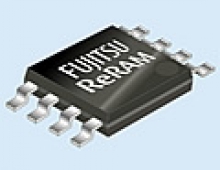
Mobiveil and Crossbar Partner to Put ReRAM on SSDs
In the latest plan to use a persistent memory different than NAND flash in a solid-state drive, Mobiveil Inc. and Crossbar Inc. believe that an SSD nbased on resistive random access memory (ReRAM) offers many advantages.
Headquartered in Milpitas, California, Mobiveil, Inc. specializes in development of Silicon Intellectual Properties (SIP), platforms and solutions for the Data Center, Networking and IoT markets.
Crossbar's base is in Santa Clara, California. The company was founded in 2010 to commercialize ReRAM.
The two companies will apply Mobiveil's NVMe SSD IP to Crossbar's ReRAM IP blocks. The goal is to enable 10 times more IOPs at one-tenth of the latencies of flash NVME SSDs to speed up access to frequently requested information in large data centers.
Mobiveil's NVMe, PCIe and DDR3/4 controllers can be adapted to accommodate the Crossbar ReRAM architecture, which is capable of six-million 512B IOPS below 10us latency. Mobiveil says that its NVM Express Controller architecture is designed to optimize link and throughput utilization, latency, reliability, power consumption and silicon footprint, and can be used along with its PCI Express (PCIe) controller and Crossbar's ReRAM controller.

Mobiveil's NVMe controller IP is outfitted with an AXI interface that simplifies integration with FPGAs and SoCs. Other IP subsystem components include PCIe Gen 3.0, DDR3/4, and ONFI controllers. An FPGA development platform includes BSPs and drivers for validating the NVMe IP solution against user applications. Crossbar ReRAM technology, meanwhile, can be integrated in standard 40 nm CMOS logic or produced as a standalone memory chip.
The two companies have been working together for the last year, said Sylvain Dubois, vice president of strategic marketing and business development at Crossbar, and in addition to developing IP for ReRAM-based SSDs, they are also working on incorporating ReRAM into NV-DIMMs.
The key benefit of using ReRAM in an SSD is that it reduces storage controller complexity by removing large portions of the background memory accesses needed for garbage collection. It also provides independent, atomic erasure by eliminating the need to build large-block memory arrays in flash designs.
Neither Mobiveil nor Crossbar are building actual SSDs or NV-DIMMs. Rather, they have developed the IP so others can build their own solutions.
There's been an interest in persistent memory since Intel and Micron introduced 3D Xpoint. However, Micron and Intel were promoting speeds a thousand times faster than that of NAND flash for the 3D Xpoint, but in reality it's only been seven or eight times faster.
Mobiveil and Crossbar's ReRAM-based SSD could also suffer the same fate, since the NVMe interface could pose speed delays. In addition, they could end up pretty expensive.




















